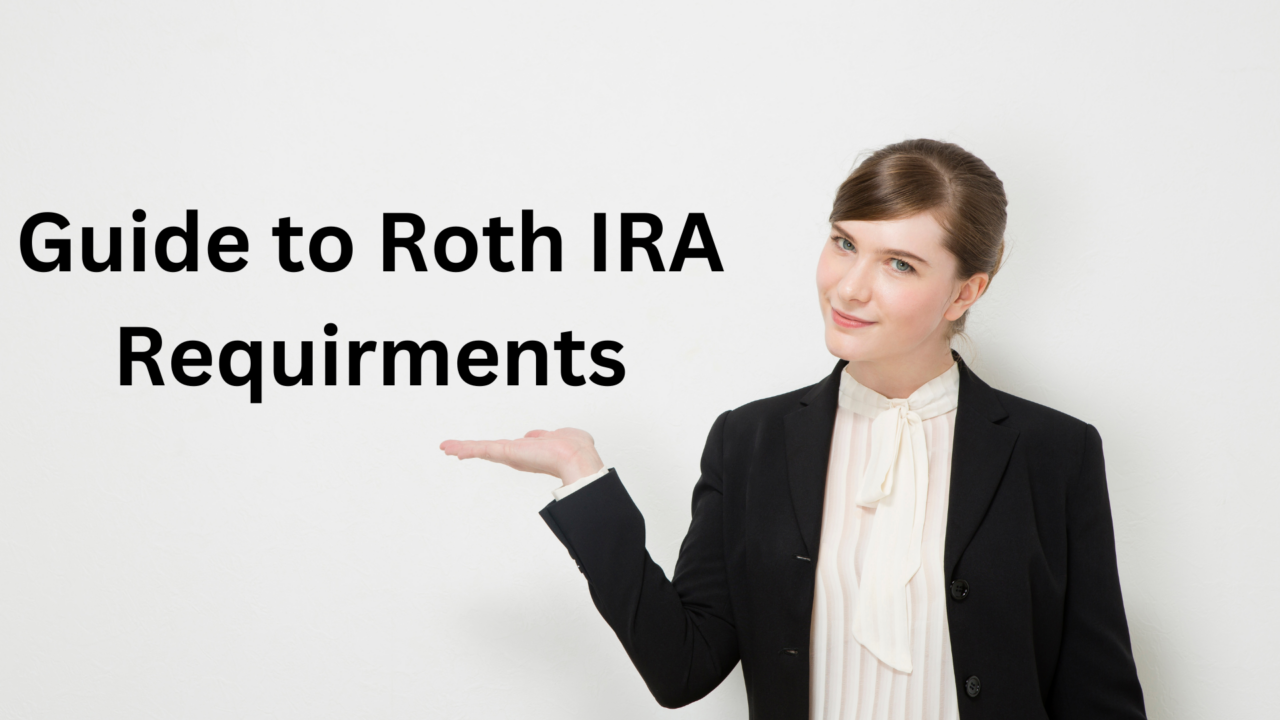Roth IRAs are one of the two most common types of IRAs available. It offers tax-free growth and withdrawals, making it a popular choice for individuals who expect to be in a higher tax bracket when they retire.
If you’re considering a Roth IRA, it’s important to understand the eligibility requirements and other key characteristics, like contribution limits, before you open an account. Here are the key things you need to know about Roth IRA requirements.
Roth IRA Overview
A Roth IRA is a type of retirement account in which you contribute after-tax dollars. Your contributions and earnings will grow tax-free while in the account, and qualified distributions or withdrawals are made on a tax-free and penalty-free basis.
Investors can choose between a traditional Roth IRA or a self-directed IRA under a Roth structure, which provides more investment freedom.
Despite long-term tax benefits, there are no current-year tax benefits, meaning you can’t deduct your Roth IRA contributions from your taxes. This is in contrast to traditional IRA contributions, which are made with pre-tax dollars and tax deductible for the year they were made.
You can withdraw from a Roth IRA penalty-free under the following circumstances:
- You’re 59 ½ or older.
- You’re withdrawing against contributions, and your account has been open for at least five years.
- You’re withdrawing funds for one of the IRS-approved reasons, such as qualified educational expenses, the purchase of your first home, or to pay unreimbursed medical expenses.
If you withdraw from earnings before you reach the age of 59 ½, or you make any withdrawal before the account is five years or older, you’ll likely face a 10% penalty unless it’s for a qualified expense.
Roth IRA Eligibility Requirements
Like other types of retirement accounts, Roth IRAs are subject to IRS-imposed eligibility requirements. Therefore, before you open and contribute to an account, consider the following.
Income requirements.
You must have an earned income to contribute to a Roth IRA. However, there is an exception if you are filing jointly and don’t have earned income, but your spouse does.
Income limits.
Whether or not you can contribute to a Roth IRA also depends on your tax filing status and adjusted gross income (AGI). You cannot contribute to a Roth IRA under the following circumstances:
- You are married and filing separately, and your AGI is $10,000 or more
- You’re married, filing jointly, or a qualified surviving spouse, and your AGI is $228,000 or more
- You’re single, head of household, or married, filing separately but didn’t live with your spouse, and your AGI is $153,000 or more.
Age Requirements
There are no age requirements for a Roth IRA. You can contribute anytime as long as you meet IRS requirements of your income and tax filing status.
Roth IRA Contribution Limits 2023
The IRS sets Roth and traditional IRA contribution limits, which can change from year to year.
The 2023 IRA contribution limit is $6,500, or $7,500 if you’re 50 or older.
Roth IRAs also include an additional set of contribution limits that are based on your tax filing status and AIG.
If you exceed the contribution limit, you must pay a penalty for each tax year while the excess contribution remains in your account.
Income-based Roth IRA Contribution limits for 2023
| Tax-filing status | Income | Contribution limit |
| Married filing jointly Qualifying widower | Less than $218,000 | Full amount |
| $218,000 or more but less than $228,000. | Reduced amount | |
| $228,000 or more | Zero | |
| Married filing separately (lived with your spouse at any point during the tax year) | Less than $10,000 | Reduced amount |
| $10,000 or more | Zero | |
Single Head of household Married filing separately (did not live with spouse during the tax year) | Less than $138,000 | Full amount |
| $138,000 or more but less than $153,000 | Reduced amount | |
| $153,000 or more | Zero |
Required Minimum Distributions
Unlike traditional IRAs, which require you to take required minimum distributions starting at age 73 (72 if you were 72 before Dec 31, 2022), Roth IRAs do not have minimum distribution requirements as long as the account holder is alive. Once the account holder dies, the beneficiary may be required to take minimum distributions depending on their relationship with the policyholder.
If you have an inherited IRA, then it’s important to speak to a tax or financial professional who can help you understand your distribution obligations.
Roth IRA vs. Traditional IRA
| Roth IRA | Traditional IRA | |
| Income requirements | Must have an earned income or be filing as married with a spouse who has an earned income. | Must have an earned income or be filing as married with a spouse who has an earned income. |
| Income limits | Individuals may be ineligible to contribute to a Roth IRA if their AGI exceeds IRS limits based on tax-filing status. (See table above). | None. |
| Age requirements | None. | None. |
| Contribution limits | $6,500 ($7,500 if you’re over 50) for the 2023 tax year. PLUS Additional contribution limits based on your tax filing status and AGI (See table above) | $6,500 ($7,500 if you’re over 50) |
| Required minimum distributions (RMD) | None, unless the account holder dies. | Must take RMD starting at 73 *Note: IRS increased the age to 73 with the passage of the SECURE 2.0 Act. If you were 72 in 2022, you are subject to the previous RMD age of 72. |
A Roth IRA can be a great retirement savings tool, but there are key factors to consider before you choose this type of retirement account over a traditional IRA or another retirement vehicle.
Because Roth IRAs allow you to contribute with after-tax dollars and take tax-free, qualifying withdrawals, this type of account may be ideal if you expect to be in a higher tax bracket when you retire. Roth IRAs also provide the freedom to access contributions early, without penalty, as long as your account is open for at least five years.
Another benefit of a Roth IRA is that you do not need to take required distributions, meaning you can leave funds in your account as you see fit, allowing for continued growth until you need access.
However, Roth IRAs include very specific income-based contribution limits that may not make them ideal for some individuals, depending on their tax-filing status and AGI. For instance, if you are married, filing separately, and earning $10,000 or more, you won’t be eligible for a Roth IRA.
Always consider your projected income and tax filing status to determine if the income-based contribution limits are likely to negatively affect you.
Self-directing your Roth IRSA allows you to invest in real estate in places like Denver, Austin, or Salt Lake City tax-free. Speak to a financial professional, like Horizon Trust expert, to determine your investment options and if a Roth IRA or Roth SDIRA is right for you.
FAQs
Can I open a Roth IRA without a job?
If you do not have an earned income, you cannot open a Roth IRA. However, there may be an exception if you are married, filing jointly, and your spouse earned an income.
What counts as earned income?
Earned income is taxable income you earn while working for someone else or yourself. Examples of earned income include:
- Salary, wages, or tips from which federal income taxes are withheld.
- Contract work, freelancing, gig economy income, etc., from which no taxes were withheld, such as selling products or services online, providing professional services, driving for Uber or Lyft, etc.
- Non-taxable combat pay.
- Union strike benefits.
- Some disability benefits you received prior to the minimum retirement age.
Earned income does not include child support, alimony, unemployment benefits, social security benefits, pensions, annuities, or investment interest.
Are RMDs required for Roth IRAs?
No, required minimum distributions are not required in a Roth IRA unless the account holder has died and you are the beneficiary of the Roth IRA.
Related Posts
March 28, 2024
Is Self-Directed IRA Real Estate Wise? 10 Pros & Cons
Self-directed investment can open many doors for investors. There are many…




